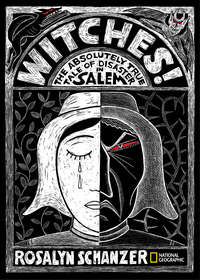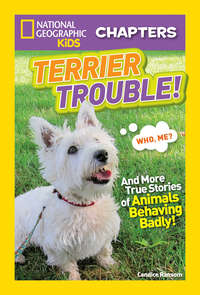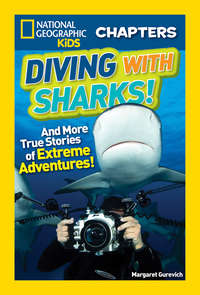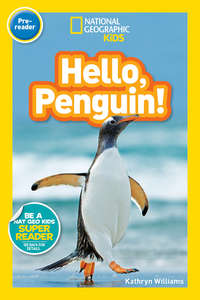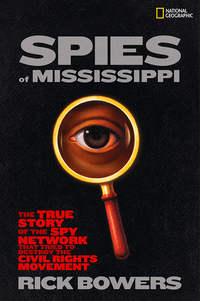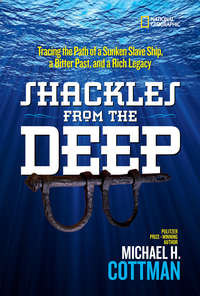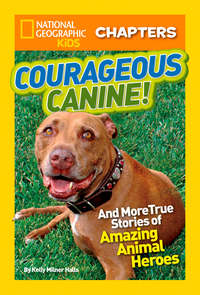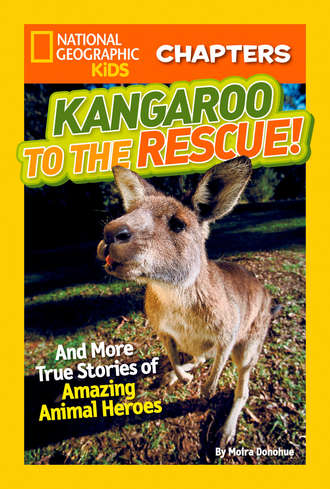
Полная версия
National Geographic Kids Chapters: Kangaroo to the Rescue!: And More True Stories of Amazing Animal Heroes

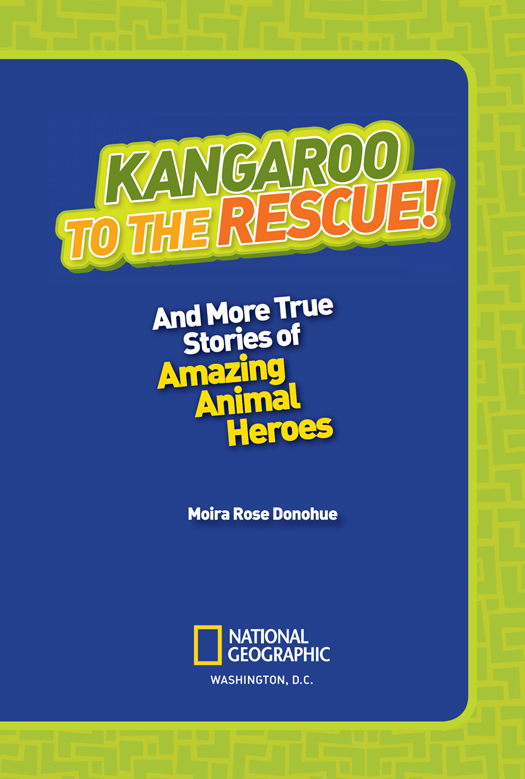
Copyright © 2015 National Geographic Society
All rights reserved. Reproduction of the whole or any part of the contents without written permission from the publisher is prohibited.
Published by the National Geographic Society
Gary E. Knell, President and Chief Executive Officer
John M. Fahey, Chairman of the Board
Declan Moore, Executive Vice President; President, Publishing and Travel
Melina Gerosa Bellows, Publisher and Chief Creative Officer, Books, Kids, and Family
Prepared by the Book Division
Hector Sierra, Senior Vice President and General Manager
Nancy Laties Feresten, Senior Vice President, Kids Publishing and Media
Eva Absher-Schantz, Design Director, Kids Publishing and Media
Jay Sumner, Director of Photography, Kids Publishing and Media
Jennifer Emmett, Vice President, Editorial Director, Kids Books
R. Gary Colbert, Production Director
Jennifer A. Thornton, Director of Managing Editorial
Staff for This Book
Shelby Alinsky, Project Editor
Marfé Ferguson Delano, Editor
Jay Sumner, Photo Editor
Callie Broaddus, Associate Designer
Ruth Ann Thompson, Designer
Paige Towler, Editorial Assistant
Erica Holsclaw, Special Project Assistant
Sanjida Rashid, Design Production Assistant
Margaret Leist, Photo Assistant
Grace Hill, Associate Managing Editor
Joan Gossett, Production Editor
Lewis R. Bassford, Production Manager
Susan Borke, Legal and Business Affairs
Production Services
Phillip L. Schlosser, Senior Vice President
Chris Brown, Vice President,
NG Book Manufacturing
George Bounelis, Senior Production Manager
Nicole Elliott, Director of Production
Rachel Faulise, Manager
Robert L. Barr, Manager

The National Geographic Society is one of the world’s largest nonprofit scientific and educational organizations. Founded in 1888 to “increase and diffuse geographic knowledge,” the Society’s mission is to inspire people to care about the planet. It reaches more than 400 million people worldwide each month through its official journal, National Geographic, and other magazines; National Geographic Channel; television documentaries; music; radio; films; books; DVDs; maps; exhibitions; live events; school publishing programs; interactive media; and merchandise. National Geographic has funded more than 10,000 scientific research, conservation, and exploration projects and supports an education program promoting geographic literacy.
For more information, please visit nationalgeographic.com, call 1-800-NGS LINE (647-5463), or write to the following address:
National Geographic Society
1145 17th Street N.W.
Washington, D.C. 20036-4688 U.S.A.
Visit us online at nationalgeographic.com/books
For librarians and teachers: ngchildrensbooks.org
National Geographic supports K–12 educators with ELA Common Core Resources. Visit natgeoed.org/commoncore for more information.
More for kids from National Geographic: kids.nationalgeographic.com
For rights or permissions inquiries, please contact National Geographic Books Subsidiary Rights: ngbookrights@ngs.org
Trade paperback
ISBN: 978-1-4263-1913-6
Reinforced library edition
ISBN: 978-1-4263-1915-0
eBook ISBN: 978-1-4263-2225-9
v3.1
Version: 2017-07-11

Cover
Title Page
Copyright
LULU: Kangaroo to the Rescue
Chapter 1: Pouch Pet
Chapter 2: Hop Along
Chapter 3: Big Foot
MAGGIE AND PILOT: A Tale of Two Dogs
Chapter 1: Play Ball
Chapter 2: Look Out!
Chapter 3: Eyes and Ears
DASIEY, LULU, AND BUTTERCUP: Three Little Pig Heroes
Chapter 1: Daring Dasiey
Chapter 2: Loyal Lulu
Chapter 3: Sweet Little Buttercup
DON’T MISS!
Chapter 1: No Ordinary Cow
More Information
Dedication
Credits
Acknowledgments
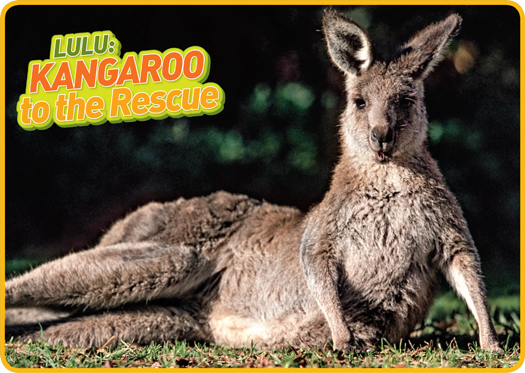
Lulu takes a break from hopping to stretch out in the sun. (photo credit p01.1)
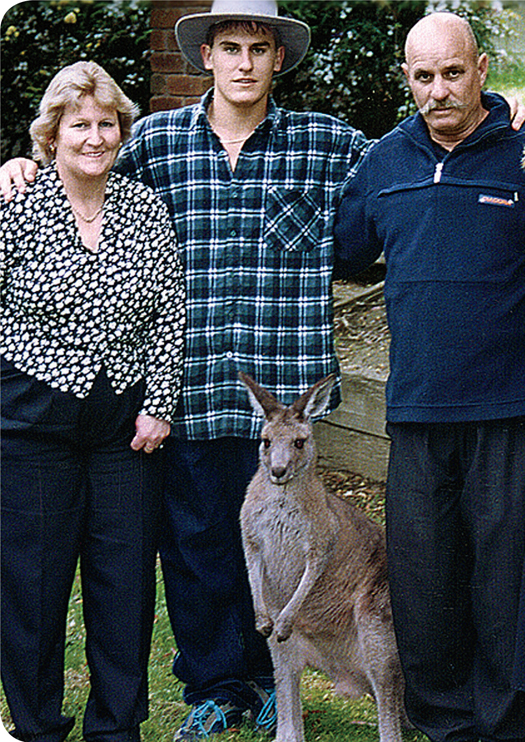
Lulu is happy to hang out with Luke Richards and his parents. (photo credit p01.2)
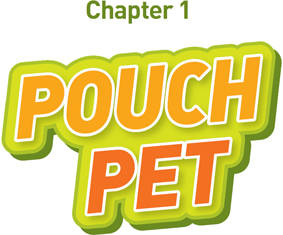
Luke Richards and his friends were driving home late one evening.
“Watch out!” one of the boys yelled. “There’s something in the road!”
Squee!! The driver hit the brakes and swerved. He avoided hitting the lump in the road.
“Pull over, mate,” Luke said. He wanted to move whatever was in the road out of the way. Luke hopped out of the car.
The lump turned out to be a dead kangaroo. That would be a shock if you lived in the United States. But Luke lived in Australia. Millions of kangaroos live there, too. Unfortunately, sometimes they wander into the road in front of cars and trucks.
Luke was sad to see the kangaroo, but he knew he had to move it out of the way. He grabbed the animal by the tail and dragged it to the side of the road. It was heavy. Full-grown eastern gray kangaroos, or “roos,” as they say in Australia, weigh about 145 pounds (66 kg).
Then Luke saw something amazing. The kangaroo’s belly twitched. Kangaroos are a kind of mammal known as marsupials (sounds like mar-SOO-pee-ulz). Females have a pouch across their bellies. That’s where they keep their babies, called joeys (sounds like JOE-eez). Luke put his hand in the pouch. Gently, he removed a joey. It had survived the accident!
Luke didn’t think his parents would be happy if he brought the joey home. But he looked into the animal’s frightened eyes. He just couldn’t leave the little roo behind.
The joey was about the size of a cat. Luke wrapped it in his sweater. He climbed back into the car.
When he got home, Luke tiptoed into the house. He didn’t want to wake his parents. He got some newspapers and covered the floor of his room. He offered the joey some water. Then he tucked the little roo snugly into his sweater. He draped the sweater over his bedpost. He hoped it would feel like the mother’s pouch. Within minutes, both he and the joey were asleep.
Did You Know?
When it’s born, a baby kangaroo is hairless. It takes several months before its fur grows in.
The next morning, Luke’s mother, Lynn, opened the door to his bedroom. It was a mess. She frowned. “Luke?” she called in a voice that said he was in trouble. Luke sat up. And like bread in a toaster, the joey popped up, too.
“I’ve got a little friend, mum,” said Luke.
“So I see,” his mother sputtered.
Luke’s family lived on a small farm. It was about 90 miles (145 km) west of the city of Melbourne. The farm was surrounded by land that was covered with wild plants and trees. This is known as “the bush” in Australia. Animals from the bush often wandered onto the farm. Sometimes Luke and his sister, Celeste, would find an injured one.
“They brought home a lot of king parrots that were hurt,” said their father, Len. Once Luke and Celeste found a wounded opossum. They even rescued a wombat. They brought them to their father. He showed them how to nurse the animals.
But a baby kangaroo was another story. This joey was a female. She was about three months old. Normally, a joey doesn’t even peek out of its pouch until it is four months old. At five or six months, it climbs out into the world. But only for a short time. After a few minutes, the joey dives headfirst back into the pouch. The joey doesn’t leave the pouch for good until it’s about ten months old.
This joey would need a lot of care. Luke’s parents wondered if he would have enough time to take care of her.
“I want to do it,” Luke told them. His mother and father discussed it. They were proud of him for wanting to take care of the roo. Len and Lynn decided to give him a chance.
Lynn found an old sleeping bag. She cut it up. She sewed a pouch for the baby kangaroo. Luke slipped the joey in. She seemed to like it. It was more like a mother’s pouch than Luke’s sweater had been.
Next, Luke tried to feed the joey milk from a bottle. She refused.

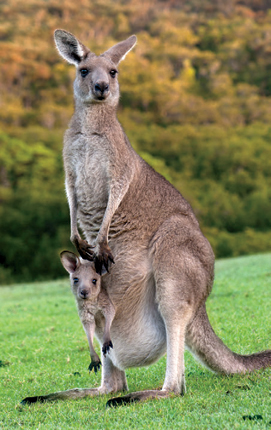
(photo credit 1.1)
Marsupials are mammals, like dogs and people. Like most mammals, they give birth to live babies. But marsupials are different from other mammals in one big way. Marsupial females have pouches. When they give birth, their babies are very tiny. A newborn kangaroo is about the size of a grape!
Right after birth, a marsupial baby crawls into its mother’s pouch. The mother carries her babies in her pouch for months. Most of the marsupials in the world live in Australia. The largest marsupial is the red kangaroo. Koalas and wombats are also marsupials.
Poor baby. She was probably missing her mother’s milk. But Luke didn’t give up. And after a couple of days, the joey finally drank the milk. Now that she was drinking milk, Luke had to feed her often—even in the middle of the night.
After taking the bottle for a while, the joey suddenly stopped. Maybe she’s ready for real food, Luke thought. He knew that kangaroos eat tender leaves and grass. Luke pulled up some grass and put it in his room.
The next morning, Len heard his son call out, “She’s eating grass!” The joey was growing up.
Luke continued to take care of the little roo. His family helped. They held her, petted her, and snuggled her. She cuddled with them on the couch. They were growing very attached to her.
But after a few months, the Richards family had another discussion.
“I think it’s time we turned the joey out,” Len said. He knew she needed to return to the wild.
No one wanted to see her go. She was a family pet now. But they agreed it was the right thing to do. The next morning, Len opened the gate. The family watched silently as the joey hopped through it. She bounded over the next fence. She bounced high over the next one.
She was gone.
But three hours later, something was hopping around the Richardses’ yard. The joey was back!
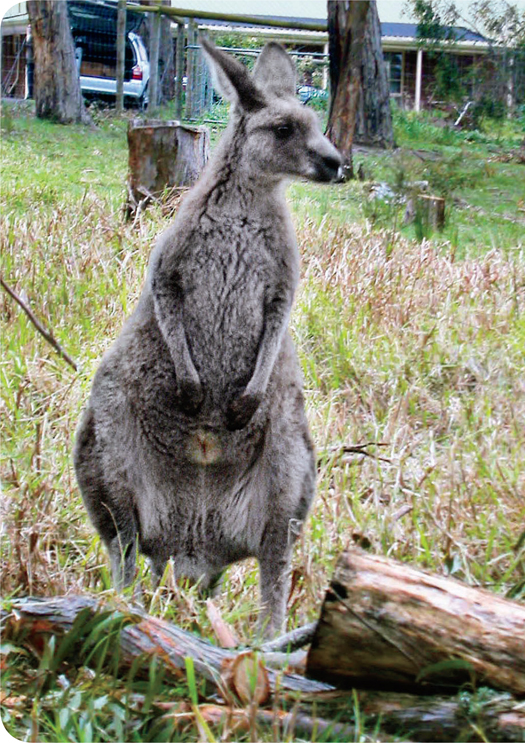
In the Richardses’ backyard, Lulu perks up her big ears. (photo credit 1.2)
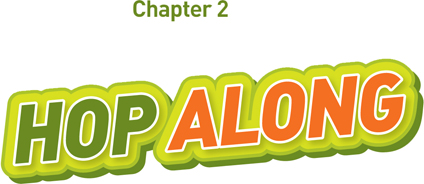
The Richardses were thrilled to have the joey back. But if she was going to stay, they needed to make some changes.
Len said, “She needs a name.” They had another family discussion. No one said anything at first.
“What about ‘Lulu’?” Lynn asked. Everyone liked the name right away. Then Lynn said, “She needs to move outside.”
The joey wasn’t housebroken. Lynn was tired of the messes Lulu made in the house. She thought if she hung a cloth pouch on the porch, Lulu could hop in and out during the night. Then Luke wouldn’t have to cover his floor with newspapers.
Lulu seemed to like the idea right away. She had a little freedom. But she had her family close by, too.
The joey grew. During the day, she roamed freely around the farm. The Richardses had an apple tree on the farm. King parrots liked to perch in the tree. They munched on the fresh, crunchy apples.
But Lulu wanted the crisp apples, too. She would jump up and scare the birds away. Then she would pull the ripest apples off the tree for herself.
Sometimes Lulu hopped the fences and took off for the bush. But at six in the evening, the Richardses would hear a loud banging on the door. Lulu kicked the door with her feet at dinnertime every night. Then she bounded inside the house. Lulu headed to the pantry first. She wanted a snack of her favorite “teddy bear” biscuits (sounds like BIS-kits), or cookies.
Did You Know?
Female kangaroos are called “flyers.” The males are called “boomers.”
She reached for the snack jar with her front paws. Kangaroos are one of very few bipedal (sounds like bye-PED-ul) animals. That means that they walk on two feet, like humans. They use their front paws to hold things. They also use them if they are walking on all fours, called “slow walking.”
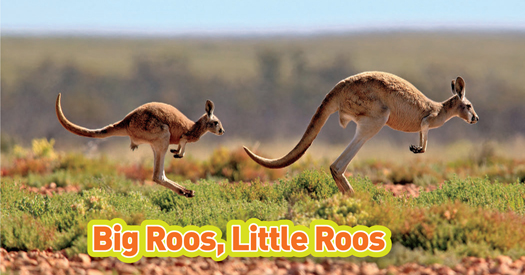
(photo credit 2.1)
There are millions of kangaroos in Australia. In fact, more kangaroos live there than people! There are more than 60 kinds, or species (sounds like SPEE-sheez), of kangaroo. They come in many sizes. The two largest kinds are gray kangaroos and red kangaroos (shown above). They can stand as tall as a six-foot (1.8-m) person and usually weigh 120 to 150 pounds (54 to 68 kg). They live in herds called “mobs.” The smallest kangaroo is the musky rat kangaroo. It’s only about the size of—you guessed it—a rat.
“Lulu, be careful,” Len would tell the roo. But a few times he didn’t get there fast enough, and Lulu dropped the jar. After she broke a couple of jars, Len got a plastic box for the biscuits.
The Richardses kept a big bowl of fruit for the family. It usually sat on the dinner table. Lulu loved fruit. She stood high on her back legs. She stretched out her front paws to grab the bowl. But if she couldn’t reach it, Lulu knew a clever trick.
Slowly she tugged the tablecloth. Bit by bit, the bowl moved closer. Then Lulu picked through the fruit. She especially liked nectarines (sounds like nek-tuh-REENS) and bananas. But she wanted the ripest fruit. If she bit into a piece that wasn’t ripe enough, she put it back and took another! Then she held the fruit with her front paws and nibbled around the pit.
The Richardses also had a dog. Bustie was a cocker spaniel (sounds like SPANyul). Lulu liked to play with Bustie. She chased him. She batted at him with her front paws. She even grabbed his silky ears. He didn’t mind. And sometimes he played with her, too.
Lulu sat with the family and Bustie in the living room every evening. Like most dogs, Bustie liked to lay by the fireplace. Lulu liked it there, too. If Bustie was already curled up in front of the fire, Lulu would nudge him out of the way. After all, she was a lot bigger. Then Lulu would lay down with her front legs under her. As she relaxed, her head went down and her paws went out. Soon she was asleep.
“That’s how I knew she really trusted us,” said Len.
The Richardses never tried to train Lulu to go to the bathroom outside, like a dog. Somehow, she just figured it out. Whenever she wanted to go outside, she went to the door and stood there. If they didn’t notice right away, she knocked on it.
Конец ознакомительного фрагмента.
Текст предоставлен ООО «ЛитРес».
Прочитайте эту книгу целиком, купив полную легальную версию на ЛитРес.
Безопасно оплатить книгу можно банковской картой Visa, MasterCard, Maestro, со счета мобильного телефона, с платежного терминала, в салоне МТС или Связной, через PayPal, WebMoney, Яндекс.Деньги, QIWI Кошелек, бонусными картами или другим удобным Вам способом.


